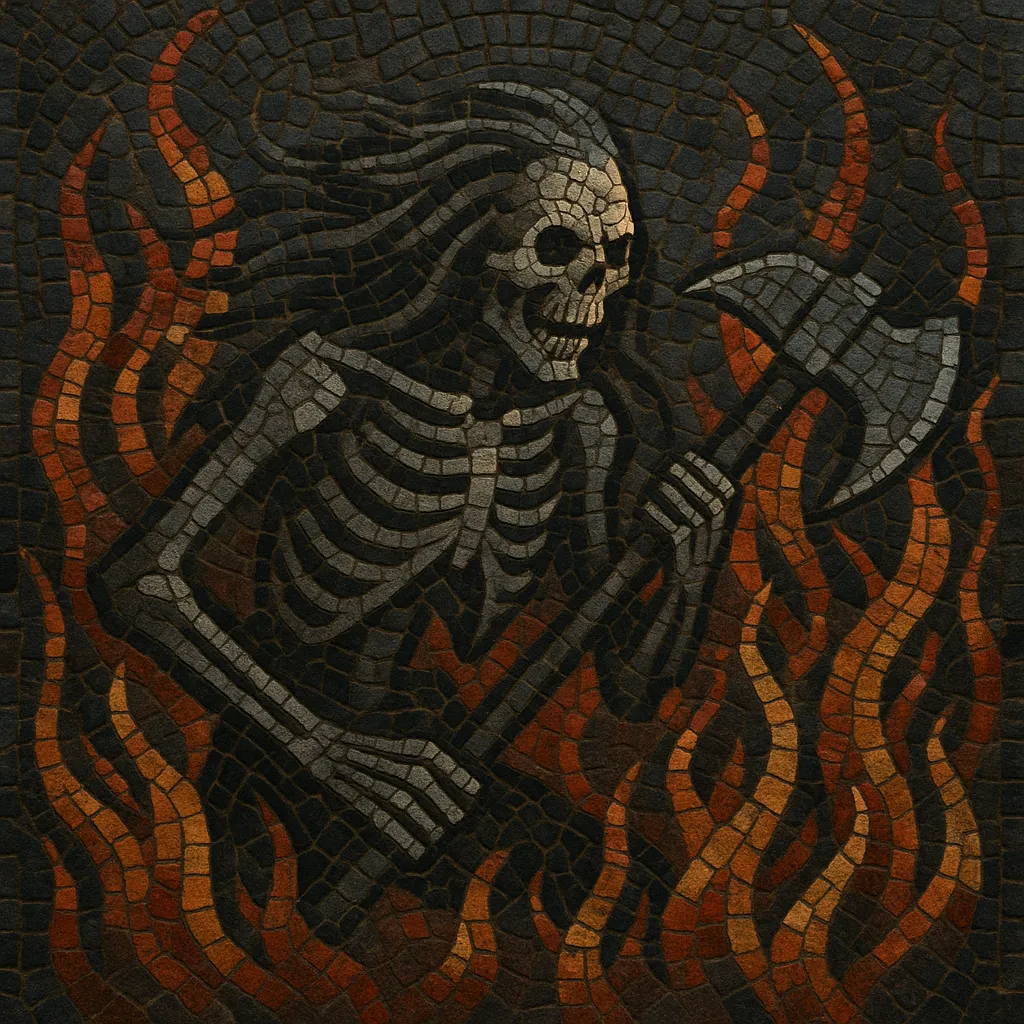Melodic death metal (often shortened to melodeath) blends the speed, aggression, and harsh vocals of death metal with the harmonized guitar leads, memorable melodies, and songcraft of traditional heavy metal and thrash. It is characterized by twin‑guitar harmonies, fast tremolo riffs, punchy palm‑muted rhythms, and growled or screamed vocals, often contrasted with catchy, clearly articulated lead lines.
Compared to traditional death metal, the genre favors stronger tonal centers, consonant interval harmonies (thirds and sixths), and more accessible structures, while retaining double‑kick intensity and occasional blast beats. Production tends to be tighter and clearer than early death metal, and many bands incorporate keyboards for texture. The style is strongly associated with the early–mid 1990s Gothenburg scene in Sweden, though parallel strains also emerged in the UK and Finland.
The roots of melodic death metal lie in the convergence of late 1980s/early 1990s death metal and the harmonized guitar language of the New Wave of British Heavy Metal. In the UK, Carcass’s album "Heartwork" (1993) refined a more melodic, tightly arranged take on death metal. In Sweden, bands from the Gothenburg scene—At the Gates, In Flames, and Dark Tranquillity—systematically fused death metal riffing with NWOBHM-style twin leads and hook‑driven structures. Landmark releases such as At the Gates’ "Slaughter of the Soul" (1995) and In Flames’ "The Jester Race" (1996) codified the blueprint.
The "Gothenburg sound" became shorthand for crisp production, harmonized lead guitars, and driving, thrash‑inflected rhythms. Dark Tranquillity’s "Skydancer" (1993) and "The Gallery" (1995) emphasized lyrical, minor‑key melodies; In Flames and At the Gates pushed catchy chorus writing and streamlined song forms. Meanwhile, Finland’s Children of Bodom (late 1990s) injected neoclassical runs and power‑metal virtuosity, while Sweden’s Arch Enemy brought a sharp, riff‑centric edge; Amon Amarth popularized epic, Viking‑themed melodeath.
In the 2000s, production became glossier and arrangements more hook‑oriented. Bands such as Soilwork and Scar Symmetry blended clean choruses and electronic textures, while The Black Dahlia Murder helped establish a distinctly American, high‑velocity melodeath variant. The style’s melodic language and streamlined aggression heavily influenced the rise of metalcore and especially melodic metalcore, leading to widespread cross‑pollination.
Contemporary acts from Finland (Insomnium, Omnium Gatherum) emphasize atmosphere and melancholy; others merge melodeath with progressive, symphonic, or folk elements. The genre remains a cornerstone of modern metal, valued for uniting intensity with memorable melody and for its enduring impact on metalcore, deathcore, and Viking‑inflected metal.
Use two electric guitars, electric bass, and a drum kit; add keyboards sparingly for pads or counter‑melodies. Common tunings include D standard, Drop C, or Drop B to retain weight while preserving note clarity for fast melodic lines.
Target tempos in the 140–200 BPM range. Combine thrash‑style down‑picked gallops, tremolo‑picked passages, and syncopated palm‑muted riffs with double‑kick patterns; use blast beats for accents rather than the constant foundation. Transitions often pivot on halftime drops, pedal‑tone chugs, or drum fills that hand off to a lead motif.
Write in minor modes (Aeolian and Dorian are common) with frequent use of harmonic minor and Phrygian/Phrygian dominant for a sharper, "epic" color. Build twin‑guitar leads harmonized in thirds and sixths; outline clear melodic motifs that recur in intros, post‑choruses, or bridges. Contrast low, percussive rhythm guitars with lyrical, singing leads.
Alternate riff‑driven verses with hook‑centric choruses (ABABCB is typical). Employ pedal‑tone riffs, sequence‑based tremolo lines, and call‑and‑response between rhythm and lead guitars. Include brief clean or acoustic interludes for dynamic relief before a climactic solo or final chorus. Keep solos melodic and thematic rather than purely virtuosic.
Use harsh vocals—mid to low growls and higher screams—for verses; optional clean refrains can lift the chorus in a modern approach. Lyrical themes often explore existential struggle, melancholy, mythology, nature, or historical/epic narratives.
Aim for tight, articulate rhythm guitars (high‑gain amps with controlled low end and present mids), layered double‑tracked rhythms, and focused lead tones with modest delay. Triggered or carefully edited drums keep rapid double‑kick lines consistent. Prioritize clarity so harmonized leads and fast picking remain intelligible at speed.


